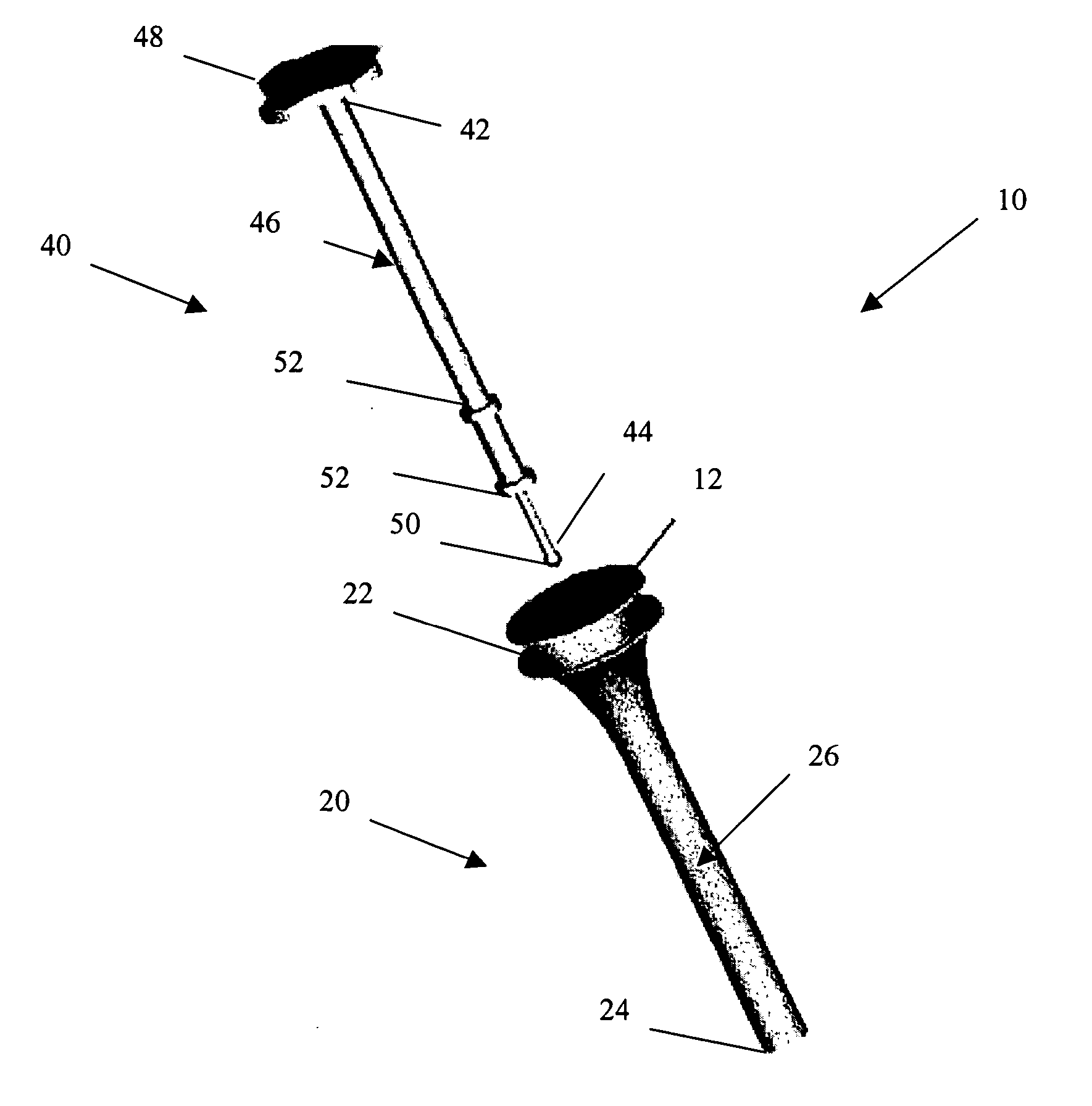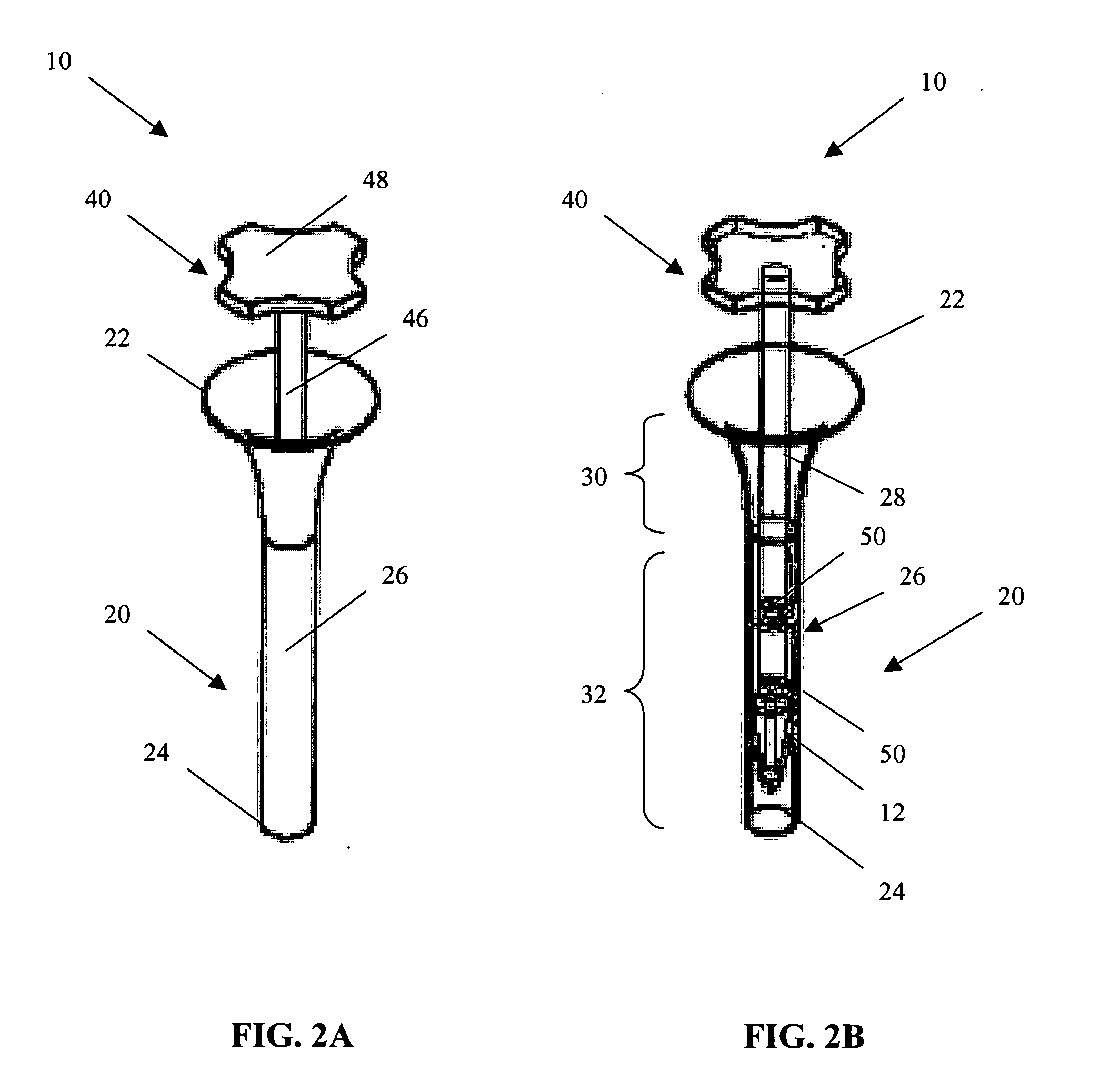Arthroscopic tissue scaffold delivery device
a delivery device and tissue technology, applied in the field of surgical tools and devices for delivering tissue implants, can solve the problems of no acceptable way to arthroscopically deliver the scaffold without and no convenient method for delivering the tissue-loaded scaffold through a cannula to the defect site, etc., to achieve the effect of not reducing the pressure at the injury si
- Summary
- Abstract
- Description
- Claims
- Application Information
AI Technical Summary
Benefits of technology
Problems solved by technology
Method used
Image
Examples
Embodiment Construction
[0011] Turning now to the drawings and particularly to FIG. 1, a delivery system 10 for delivering a tissue scaffold 12 in accordance with the present invention is shown. The delivery system 10 comprises two main components. The first component is an insertion tube 20 and the second component is an insertion rod 40. The insertion tube 20 is defined by a flared proximal end 22 and a distal end 24. Extending between these ends 22, 24 is a hollow, elongate body 26. As shown in FIG. 2B, the hollow, elongate body 26 defines a passageway 28 comprising a first, flared portion 30 that extends into a second, tubular portion 32. The first, flared portion 30 can have a curved taper in order to provide a smooth transition between the two portions 30, 32 and to avoid damage to the tissue scaffold 12 during its delivery. The first, flared portion 30 can be integral with the second, tubular portion 32. Alternatively, the first, flared portion 30 can be provided as a separate component which is the...
PUM
 Login to View More
Login to View More Abstract
Description
Claims
Application Information
 Login to View More
Login to View More - R&D
- Intellectual Property
- Life Sciences
- Materials
- Tech Scout
- Unparalleled Data Quality
- Higher Quality Content
- 60% Fewer Hallucinations
Browse by: Latest US Patents, China's latest patents, Technical Efficacy Thesaurus, Application Domain, Technology Topic, Popular Technical Reports.
© 2025 PatSnap. All rights reserved.Legal|Privacy policy|Modern Slavery Act Transparency Statement|Sitemap|About US| Contact US: help@patsnap.com



